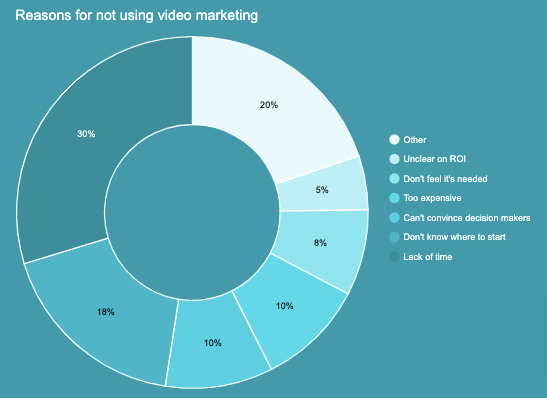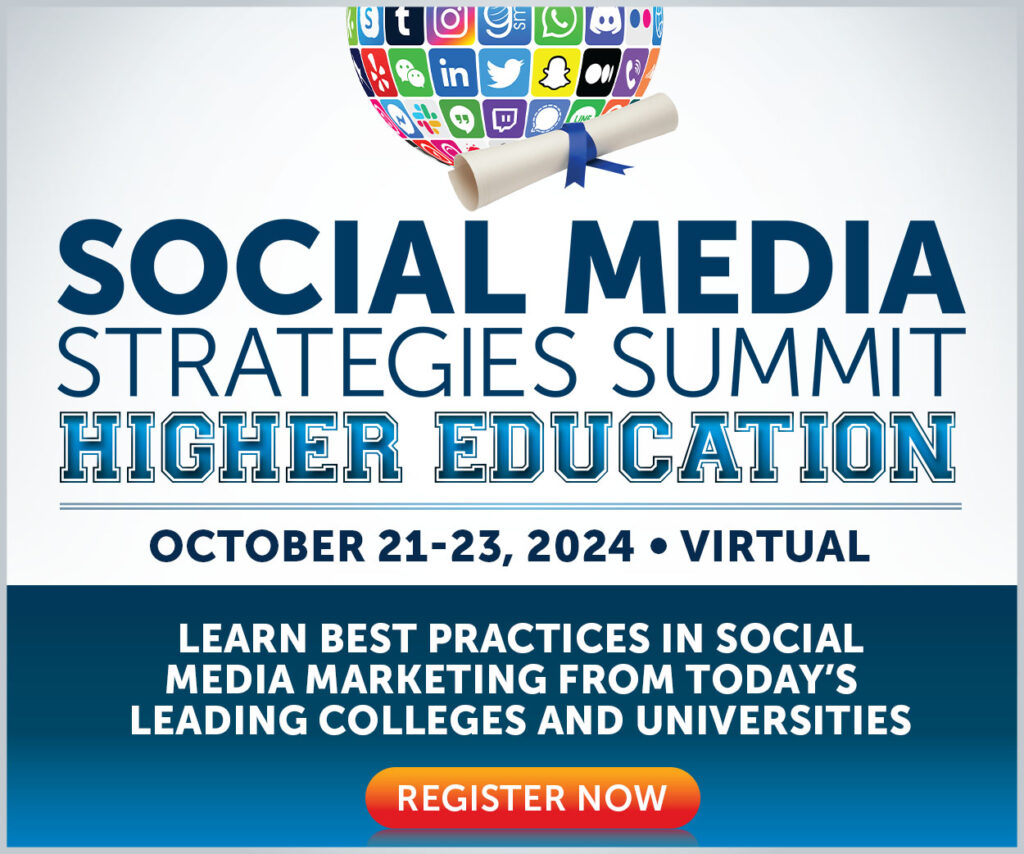YouTube’s vast reach and credibility make it a valuable resource in the world of government on social media.
The video platform has over two billion monthly active users, with over three-fifths of American users visiting the site daily. Moreover, nine in 10 users agree that YouTube provides trustworthy recommendations and information.
Creating video content requires more thought than simply rattling off a tweet or a text-based Facebook post. To help you, we’ve rounded up 10 of the best government agencies on YouTube and analyzed what they’re getting right.
1. NASA
To some extent, there’s little point in analyzing NASA’s content strategy: it’s a cool, world-famous agency engaged in groundbreaking work that many people find extremely exciting. It can publish almost anything and still get tens of thousands of views.
However, there’s still plenty to learn here. In particular, NASA highlights the effectiveness of live video in reaching and engaging audiences.
We know how effective live streams can be on any platform. Social Insider research finds that live videos on Facebook generate significantly higher engagement rates than pre-recorded videos.
While NASA has the resources to live-stream 24/7, your approach needn’t be quite so full-on. Instead, dip your toe into live video by broadcasting timely events like press announcements and on-the-scene footage.
2. South Metro Fire Rescue
South Metro Fire Rescue is one of the best examples of how first responders can leverage YouTube to engage audiences, racking 182,000 subscribers and over 37 million views since joining the platform in 2016.
The agency demonstrates the power of creating people-centric video content. Three of its four most popular posts — representing over five million combined views — are “day in the life” videos focusing on individuals in specific roles.
Not only does this content allow South Metro Fire Rescue to reach new audiences and educate them on its mission, but it also helps humanize the agency by spotlighting real firefighters and dispatchers.
3. Pasco Sheriff’s Office
YouTube is a comparatively recent addition to the toolkits of many marketers in the world of social media for government. Pasco Sheriff’s Office is something of a YouTube veteran, having joined the platform in 2010 — publishing more than 270 videos and generating almost seven million views.
Like South Metro Fire Rescue, the agency has seen a lot of success with “day in the life” content.
However, its most popular post — with over three million views at the time of writing — is a short (30-second) advice piece detailing the steps vehicle owners should take to mitigate the risk of car theft:
This video illustrates the benefits of focusing on a single, concise message. Offering straightforward takeaways makes your content more actionable and helpful, making it more shareable.
4. US Consumer Product Safety Commission
The mission of the US Consumer Product Safety Commission (CPSC) is to protect Americans from unreasonable risks of serious injury or death from thousands of types of consumer products.
Getting it right relies on communicating serious messages in a concise, easy-to-understand way. It’s telling, therefore, that most of the agency’s content clocks in at under one minute, while many of its videos are 30 seconds or shorter.
How does the agency succeed in relaying important — often life-or-death — messages in such a brief timespan? In part, by combining visual elements with short, text-based instructions:
Much like Pasco Sheriff’s Office, the CPSC demonstrates the value of focusing on a single, simple message in each video, making its content more impactful and memorable.
5. FBI
The Federal Bureau of Investigation is one of the most popular government agencies on YouTube, with over 223,000 subscribers and more than 72 million views.
Despite being a massive agency with a vast budget, the FBI demonstrates how to make your marketing resources go further by creating content that works across multiple channels.
For instance, it produces a podcast series called Inside the FBI, which discusses issues ranging from common scams to the use of forensic science at crime scenes. As well as making this content available through all the popular podcasting platforms, the FBI repurposes each episode into a video and posts it on YouTube:
Each video features the same backdrop, accompanied by the podcast audio and subtitles. This setup makes it comparatively simple to produce (after all, the podcasts already exist), yet these videos regularly generate thousands of views.
6. Pierce County Sheriff’s Department
Pierce County Sheriff’s Department is another agency that recognizes the benefits of YouTube as a platform for humanizing its employees and their vital roles.
The department regularly shares ride-along videos that help followers get to know individual officers and better understand the work of a local police department.
These videos follow a repeatable format: a short introduction, a brief speech to the camera featuring the officer in question, and footage showing them out and about in the community.
This is a key learning for any government social media marketers yet to leap YouTube: don’t try to reinvent the wheel with every video. Develop one or two themes and templates, then stick with them over time, helping you build a consistent voice and style your audience recognizes.
7. US Small Business Administration
Let’s be honest: it might not be immediately evident to the average person what your agency actually does. YouTube is an excellent platform for setting the record straight, with 86% of US viewers saying they often visit the website to “learn new things.”
The US Small Business Administration clearly understands the value of YouTube as an educational platform for its audience. To date, its most popular piece of YouTube content is an English-language explainer video that discusses the agency’s founding mission and how it helps with everything from writing a business plan to providing resources detailing how to export products to international markets:
The best thing about this sort of evergreen content is that you can promote it repeatedly because it’s always relevant. In this way, a single video asset can have an extremely long lifespan — far greater than the average text-based social media post.
8. US National Archives
We get it: video content can be a real challenge for government social media marketers with limited resources. Indeed, among organizations that don’t currently use video in their marketing strategies, “lack of time” is the #1 reason.
However, the National Archives demonstrates that it’s perfectly possible to build a successful video content marketing strategy almost entirely reliant on recycling old content.
Most of the agency’s most popular videos are old, often recorded decades ago. But it works, with its historic content regularly notching up thousands of views.
Of course, you likely don’t have access to as much old video footage as the National Archives. Still, this approach demonstrates that recycled content can work when you get creative in how it’s presented.
9. National Science Foundation
One of the biggest challenges in the world of government on social media is finding a way to communicate complex topics in layperson’s terms. This is a particular problem for an agency like the National Science Foundation (NSF), which deals with niche topic areas that the average viewer will have little (or no) prior understanding of.
If people don’t understand your work, it’s unlikely they’ll see the value of your agency.
The NSF takes the time to break down more advanced subjects in simple, accessible terms. For instance, it produced a short video series that explained the principles of Newton’s laws of motion using football as an example:
There’s a clear lesson here: if the thing you do is hard to understand, it’s your job to discuss it in terms that anyone can figure out.
10. Environmental Protection Agency
For many government agencies, social media marketing is predominantly seen as a way to spread their message to new audiences and demonstrate their value.
But it’s also an effective tool for attracting talent to join your agency. That’s particularly true of video marketing. A study published in the Video Journal of Education and Pedagogy declared that video-based recruitment can be “an inexpensive but powerful tool which allows a human connection with the researcher early on in the research process.”
The Environmental Protection Agency realizes this. It regularly publishes videos designed to encourage viewers to consider a career with the organization by highlighting its mission to combat the effects of climate change.
Given YouTube’s unparalleled popularity among younger audiences, it’s the perfect platform for connecting with your next generation of employees.
Want to learn more about how government agencies, large and small, use social media to spread their message and reach a wider audience? Check out our next government social media conference!



 Image source
Image source






